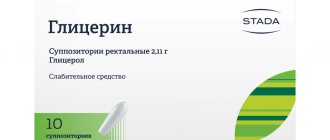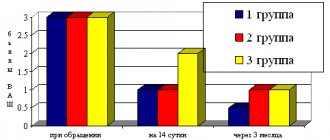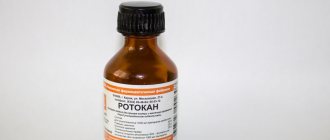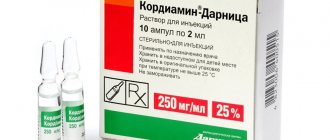Home | About us | Delivery | Advertisers | Login | Registration
Delivery on Sundays and holidays does not work!
- Medicines
- dietary supplementsVitamins
- Categories from A to Z
- Brands from A to Z
- Products from A to Z
- Medical equipment
- beauty
- Child
- Care
- Honey products appointments
- Herbs and herbal teas
- Medical nutrition
- Journey
- Making medicinesStock
Pharmacy online is the best pharmacy in Almaty, delivering medicines to Almaty. An online pharmacy or online pharmacy provides the following types of services: delivery of medicines, medicines to your home. Online pharmacy Almaty or online pharmacy Almaty delivers medicines to your home, as well as home delivery of medicines in Almaty.
my basket
Apteka84.kz is an online pharmacy that offers its customers medicines, medicinal and decorative cosmetics, dietary supplements, vitamins, baby food, intimate products for adults, medical equipment and thousands of other medical and cosmetic products at low prices. All data presented on the Apteka84.kz website is for informational purposes only and is not a substitute for professional medical care. Apteka84.kz strongly recommends that you carefully read the instructions for use contained in each package of medicines and other products. If you currently have any symptoms of the disease, you should seek help from a doctor. You should always tell your doctor or pharmacist about all the medicines you take. If you feel you need further help, please consult your local pharmacist or contact our GP online or by telephone.
© 2022 Pharmacy 84.
Lugol's solution with glycerin
Registration number: P N001598/01
Trade name: Lugol's solution with glycerin
INN or group name: Iodine+Potassium iodide+Glycerol&
Dosage form: Solution for topical use.
Compound:
Active substance:
- Iodine - 1 g.
Excipients:
- Potassium iodide - 2 g;
- Glycerol (glycerin) - 85.5 g;
- Purified water -11.5 g.
Description: Transparent syrupy liquid of red-brown color with the odor of iodine.
Pharmacotherapeutic group: Antiseptic.
ATX code: R02AA20
Pharmacodynamics: The drug contains iodine, potassium iodide and glycerol. Iodine has a local irritant and antimicrobial effect: it destroys gram-positive and gram-negative bacteria, protozoa, cysts, viruses and some spores. The bactericidal effect is strong and manifests itself quickly (it is mostly determined by molecular iodine). Iodine reacts with dead microorganisms and proteins and its bactericidal effect is weakened because of this. Potassium iodide improves the dissolution of iodine ions in water. Glycerol has a local softening effect.
Pharmacokinetics: Upon contact with mucous membranes, 30% is converted into iodides, and the rest into active iodine. Once ingested, iodine is quickly absorbed and participates in the synthesis of thyroid hormones. Iodine in the form of various compounds is removed from the body in the urine.
Indications for use: Infectious and inflammatory diseases of the mucous membranes of the mouth, pharynx and larynx (angular stomatitis, laryngitis, tonsillitis, pharyngitis).
Contraindications: Hypersensitivity of the body to drugs containing iodine, use during pregnancy and breastfeeding.
Use during pregnancy and lactation: The drug belongs to category D (dangerous for the fetus if used for more than a week). Iodine passes into mother's milk and can suppress the thyroid function of the newborn and infant.
With caution: Decompensated liver and kidney diseases, hyperthyroidism, dermatitis herpetiformis.
Directions for use: Topically. The solution is applied to the inflamed mucous membrane of the mouth, pharynx and larynx using a cotton swab wound on a spatula and soaked in the solution, or using a spray nozzle.
Side effect: Allergic reactions. With prolonged use of the drug or individual intolerance to iodine, symptoms of iodism are possible: rhinitis, skin rashes such as urticaria, acne, salivation, lacrimation, burning in the throat, contact dermatitis, erythema, bronchospasm, nausea, vomiting, Quincke's edema.
Overdose: Symptoms: irritation of the upper respiratory tract (burn, laryngo-, bronchospasm); if ingested - irritation of the mucous membranes of the gastrointestinal tract, hemolysis, hemoglobinuria; lethal dose - 3 g. Treatment: gastric lavage with 0.5% sodium thiosulfate solution, sodium bicarbonate solutions, intravenous sodium thiosulfate 30% - up to 300 ml or other solutions with a slightly alkaline reaction.
Interaction with other drugs: Iodine is inactivated by sodium thiosulfate. Pharmaceutically incompatible with essential oils, ammonia solutions, hydrogen peroxide. If the drug is ingested, the effect of medications that suppress thyroid function may be reduced. The drug "Lugol's solution with glycerin" can enhance the irritating effect of certain medications, for example, acetylsalicylic acid, on the gastric mucosa.
Special instructions: Patients suffering from thyroid diseases should carefully use medications containing iodine. Sunlight and temperatures above 40 degrees accelerate the breakdown of active iodine. The drug should not come into contact with the eyes. If this occurs, the eyes should be rinsed with plenty of water or sodium thiosulfate solution. Do not swallow the drug!
Impact on the ability to drive vehicles and maintain operating machinery: No effect.
Release form: Solution for local use. 25 g and 50 g in bottles - brown glass droppers with spray nozzles. 25 g and 50 g in orange glass bottles with a screw neck. Each bottle or dropper bottle, along with instructions for use, is placed in a pack. It is allowed to place bottles together with an equal number of instructions for use in a group package.
Storage conditions: In a place protected from light at a temperature not exceeding 20 °C. Keep out of the reach of children.
Shelf life: 3 years. Do not use after expiration date.
Conditions for dispensing from pharmacies: Without a prescription.
Lugol's solution with glycerin 50ml with spray
A country
Russia
The country of production may vary depending on the batch of goods. Please check with the operator for detailed information when confirming your order.
Active substance
Iodine + Potassium iodide + Glycerol
Compound
potassium iodide, glycerol.
pharmachologic effect
Elemental iodine has pronounced antimicrobial properties. Elemental iodine preparations are characterized by a pronounced local irritating effect on tissue, and in high concentrations, a cauterizing effect. The local effect is due to the ability of elemental iodine to precipitate tissue proteins. Preparations that eliminate elemental iodine have a much less pronounced irritating effect, and iodides have local irritating properties only in very high concentrations. The nature of the resorptive effect of elemental iodine preparations and iodides is the same. During the resorptive effect, iodine preparations have the most pronounced effect on the functions of the thyroid gland. In case of iodine deficiency, iodides help restore impaired synthesis of thyroid hormones. With normal iodine content in the environment, iodides inhibit the synthesis of thyroid hormones, the sensitivity of the thyroid gland to pituitary TSH decreases and its secretion by the pituitary gland is blocked. The effect of iodine preparations on metabolism is manifested by increased dissimilation processes. In atherosclerosis, they cause a slight decrease in the concentration of cholesterol and beta-lipoproteins in the blood; in addition, they increase the fibrinolytic and lipoproteinase activity of blood serum and slow down the rate of blood clotting. Accumulating in syphilitic gums, iodine promotes their softening and resorption. However, the accumulation of iodine in tuberculosis lesions leads to an increase in the inflammatory process in them. The release of iodine by the excretory glands is accompanied by irritation of the glandular tissue and increased secretion. This is due to the expectorant effect and stimulation of lactation (in small doses). However, in large doses, iodine preparations can cause suppression of lactation.
Indications for use
For external use: infectious and inflammatory skin lesions, trauma, wounds, myalgia. For topical use: chronic tonsillitis, atrophic rhinitis, purulent otitis media, trophic and varicose ulcers, wounds, infected burns, fresh thermal and chemical burns of I-II degree. For oral administration: prevention and treatment of atherosclerosis, tertiary syphilis.
Mode of application
When used externally, damaged areas of the skin are treated with iodine. For oral administration, the dose is set individually, depending on the indications and age of the patient. Topically used for washing lacunae and supratonsillar spaces - 4-5 procedures at intervals of 2-3 days, for irrigation of the nasopharynx - 2 -3 times a week for 2-3 months, for instillation into the ear and rinsing - for 2-4 weeks; in surgical practice and for burns, gauze napkins applied to the affected surface are moistened as needed. Contraindicated for oral administration during pregnancy. Contraindicated for oral administration in children under 5 years of age.
Interaction
Pharmaceutically incompatible with essential oils, ammonia solutions, white sedimentary mercury (an explosive mixture is formed). An alkaline or acidic environment, the presence of fat, pus, and blood weaken the antiseptic activity. Reduces the hypothyroid and goitrogenic effects of lithium preparations.
Side effect
For external use: rarely - skin irritation; with prolonged use on large wound surfaces - iodism (rhinitis, urticaria, Quincke's edema, salivation, lacrimation, acne). When taken orally: allergic skin reactions, tachycardia, nervousness, sleep disturbances, increased sweating, diarrhea (in patients over 40 years of age) ).
Contraindications
Hypersensitivity to iodine. For oral administration - pulmonary tuberculosis, nephritis, nephrosis, adenomas (including the thyroid gland), furunculosis, acne, chronic pyoderma, hemorrhagic diathesis, urticaria, pregnancy, children under 5 years of age.
special instructions
With prolonged use, phenomena of iodism are possible.
Modern Pharmaceuticals of Russia
Lugol solution for topical use 1%
INSTRUCTIONS for the use of the medicinal product for medical use
Registration number:
LP – 001397
Tradename:
Lugol
INN or group name:
Iodine+[Potassium iodide+Glycerol]
Dosage form:
Solution for topical use
Composition for 1g:
Active substance:
iodine – 10 mg;
Excipients:
potassium iodide – 20 mg; glycerol – 940 mg; purified water –30 mg.
Description:
Transparent syrupy liquid of red-brown color with the odor of iodine. When released from the vial, the drug comes out as a stream of liquid.
Pharmacotherapeutic group:
Antiseptic.
ATX Code:
R02AA20
Pharmacological properties:
The main active ingredient is molecular iodine, which has an antiseptic and local irritant effect. It has a bactericidal effect against gram-negative and gram-positive flora, and also acts on pathogenic fungi (including yeast); Staphylococcus spp. more resistant to iodine, however, with long-term use of the drug, suppression of staphylococcal flora is observed in 80% of cases; Pseudomonas aeruginosa is resistant to the drug. When applied to large surfaces of the skin and mucous membranes, iodine has a resorptive effect: it participates in the synthesis of T3 and T4, and has a proteolytic effect. Potassium iodide improves the dissolution of iodine in water. Glycerol has a softening effect. The drug is low toxic.
Pharmacokinetics:
When the drug is used in recommended doses, iodine resorption through the skin and mucous membranes of the oral cavity is insignificant. Upon contact with mucous membranes, 30% is converted into iodides. If accidentally swallowed, iodine is rapidly absorbed. The absorbed part penetrates well into organs and tissues (including thyroid tissue). It is excreted mainly by the kidneys, to a lesser extent by the intestines and with sweat. Passes into breast milk.
Indications for use:
Infectious and inflammatory diseases of the mucous membrane of the oral cavity and pharynx in adults and children.
Contraindications:
Decompensated liver and kidney diseases. Hypersensitivity to iodine and other components of the drug.
Carefully:
Hyperthyroidism, dermatitis herpetiformis, children under 12 years of age.
Use during pregnancy and lactation:
Use during pregnancy is contraindicated. Iodine passes into mother's milk and may potentially affect thyroid function in breastfed infants. Use during breastfeeding is possible if the potential benefit to the mother outweighs the possible risk to the baby. You should consult your doctor.
Directions for use and dosage:
Locally. Apply 4-6 times a day to irrigate the mucous membrane of the oral cavity, pharynx, pharynx, applying the drug with one press of the spray head. The injection of the drug is targeted and the sprayer, depending on the disease, must be directed directly to the source of inflammation.
It is recommended to hold your breath at the moment of injection.
If you are using a new package of the medicinal product, remove the protective cap, put on the nebulizer head with tip and press the nebulizer head several times. After using the drug, it is not recommended to remove the spray head and tip.
Do not allow the drug to get into your eyes. If this occurs, the eyes should be rinsed with plenty of water or sodium thiosulfate solution.
If the symptoms of inflammation do not decrease or increase after 2-3 days of therapy, you should consult your doctor. Not recommended for long-term (more than 2 weeks) use.
Side effect:
Allergic reactions. With prolonged use, the phenomenon of “iodism”, rhinitis, urticaria, angioedema, salivation, lacrimation, acne. If this or any other side effect occurs when using the drug, you should consult your doctor.
Overdose:
Symptoms: irritation of the upper respiratory tract (burn, laryngo-, bronchospasm); if ingested - irritation of the mucous membranes of the gastrointestinal tract, hemolysis, hemoglobinuria; lethal dose – about 3 g.
Treatment: gastric lavage with 0.5% sodium thiosulfate solution, sodium bicarbonate solutions, 30% sodium thiosulfate is injected intravenously - up to 300 ml.
Special instructions:
Regular use should be avoided in patients with hyperthyroidism (thyrotoxicosis). For children under 12 years of age, use after consultation with a doctor. May affect laboratory results of thyroid hormone tests.
Sunlight and temperatures above 40°C accelerate the breakdown of active iodine.
Interaction with other drugs and other forms of interaction:
Iodine is inactivated by sodium thiosulfate.
The iodine contained in the drug oxidizes metals, which can lead to damage to metal tools and surfaces.
Pharmaceutically incompatible with essential oils and ammonia solutions.
An alkaline or acidic reaction, the presence of fat, pus, and blood weakens the antiseptic activity.
If the drug is ingested, the effect of drugs that suppress thyroid function may be reduced, and thyroid function indicators may also change.
Iodine preparations can enhance the irritating effect of certain medications (including acetylsalicylic acid) on the mucous membrane of the gastrointestinal tract.
Release form:
Solution for topical use 1%. 25 ml and 50 ml in orange glass bottles with a screw neck for medicines, sealed with a lid with a dispenser complete with a sprayer with a tip.
Each bottle, along with a sprayer with a tip and instructions for medical use, is placed in a pack of chrome-ersatz box-type cardboard.
Storage conditions:
Store in a place protected from light at a temperature of 2 °C to 25 °C. Keep out of the reach of children.
Best before date:
3 years. Do not use the drug after the expiration date indicated on the package.
Conditions for dispensing from pharmacies:
over the counter.
| Product | Individual box | G/I size | Bottle weight | Number of bottles per g/y | Number of bottles per pallet | Quantity of g/i on a pallet | Barcode |
| Lugol, 50 ml | 40x40x120 | 210x168x126 | 0,133 | 20 | 4000 | 200 | 14620008623594 |





